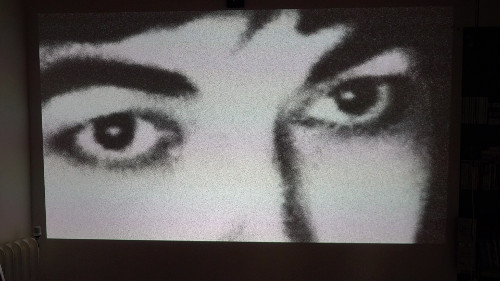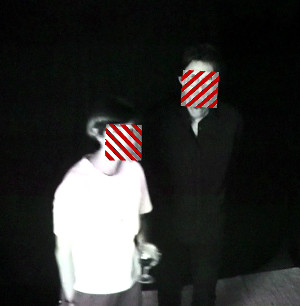| Fred
Périé |

Still from installation capture
Asymmetries
Video Installation, 2018Fred Périé keywords : gaze, surveillance, machine célibataire, interactivity/interpassivity
The public enters the room through a black curtain; in this space, that can be quite large, there is a camera filming in wide shot. A spectator's gaze is randomly chosen and projected in close-up on a big screen. The system then follows him inexorably for a while, until it looks for another spectator gaze. If none can be found, the image suddenly zooms out and what is projected is what was filmed before, but in reverse motion. However as soon as someone tries to look at this past, his eyes are detected and immediately projected.
 Transparencies printed with red bars are made available in the exhibition space so that spectators can hide from the detection system. Nevertheless, to be able to discover what was recorded, they will have to act all together. Etymologically, the French word regard (gaze in english) comes from guard and it has retained this sense of what protects / monitors and especially who does not let go. Here the machine would only be the automated relay of this regard, which eventually becomes without any regard. The work owes its title to several forms of asymmetry:
|